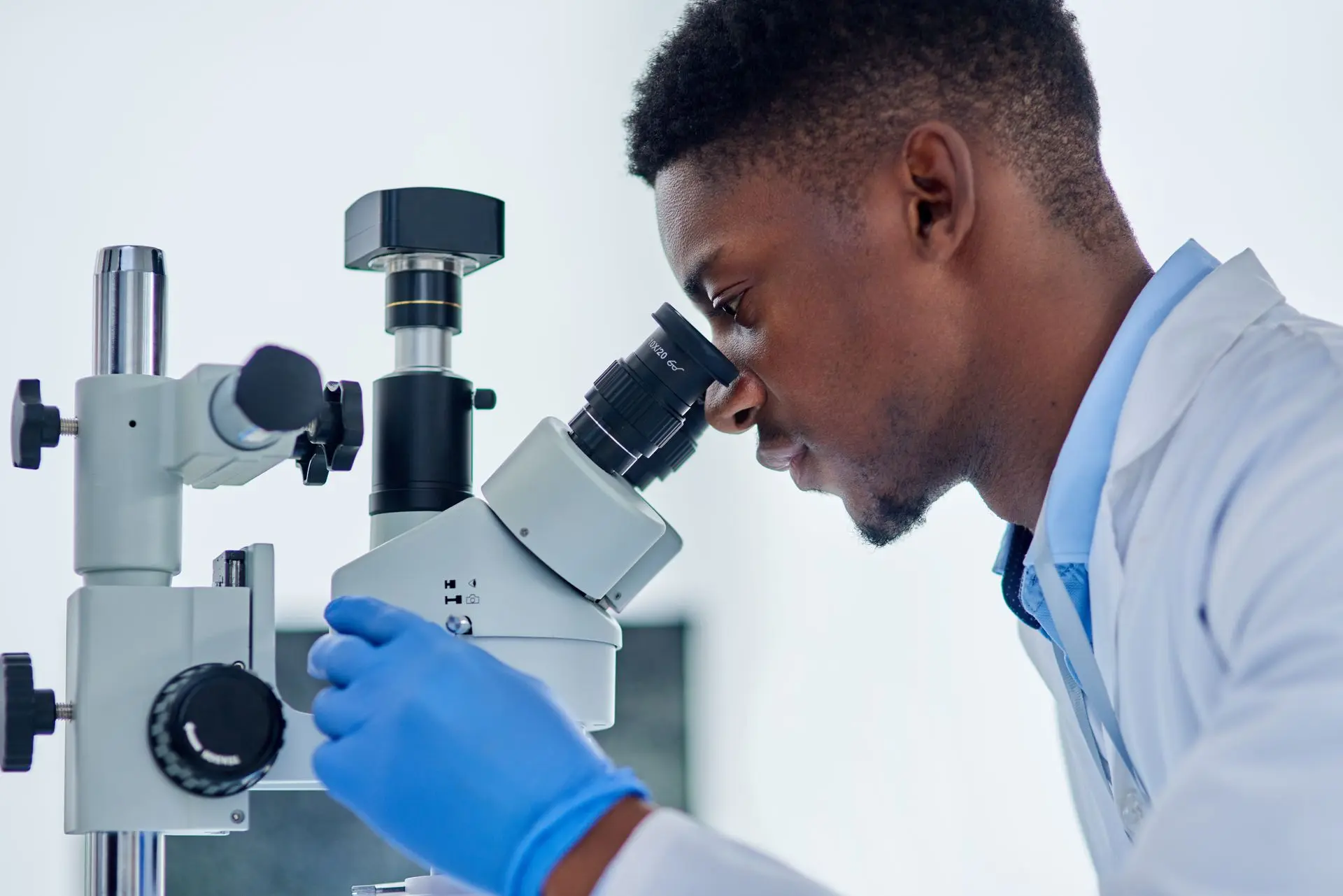RNA Polymerase: Synthesis RNA from DNA Template
RNA polymerase is an enzyme that catalyzes the synthesis of RNA from ribonucleoside triphosphates in the presence of a DNA template and divalent cation, such as Mg2+ or Mn2+. The RNA molecules are synthesized complementary and antiparalel to one of the DNA strands in a 5, to 3, direction. The ribonucleotides are covalently joined together by internucleoside 3, to 5, phosphodiester bonds with concomitant release of inorganic pyrophosphate. Continue reading ‘RNA Polymerase: Synthesis RNA from DNA Template’
RNA Polymerase: Synthesis RNA from DNA Template
RNA polymerase is an enzyme that catalyzes the synthesis of RNA from ribonucleoside triphosphates in the presence of a DNA template and divalent cation, such as Mg2+ or Mn2+. The RNA molecules are synthesized complementary and antiparalel to one of the DNA strands in a 5, to 3, direction. The ribonucleotides are covalently joined together by internucleoside 3, to 5, phosphodiester bonds with concomitant release of inorganic pyrophosphate. Continue reading ‘RNA Polymerase: Synthesis RNA from DNA Template’
Restriction Enzyme Storage
Restriction enzymes are endonucleases that recognize specific double stranded DNA sequences and cleaves the DNA in both strands. Restriction enzymes used in cloning are site specific. Cloning involves cleaving both the vector and genomic DNAs with a restriction endonuclease which yields compatible sticky ends, and then using those cohesive ends to recombine the DNAs into a construct or recombinant molecule. The vector is cleaved in one location, while the genomic DNA is extensively digested into a pool of fragments. The quality of restriction enzyme determines the successful of cloning process. Therefore, its storage is very important to be known by us.
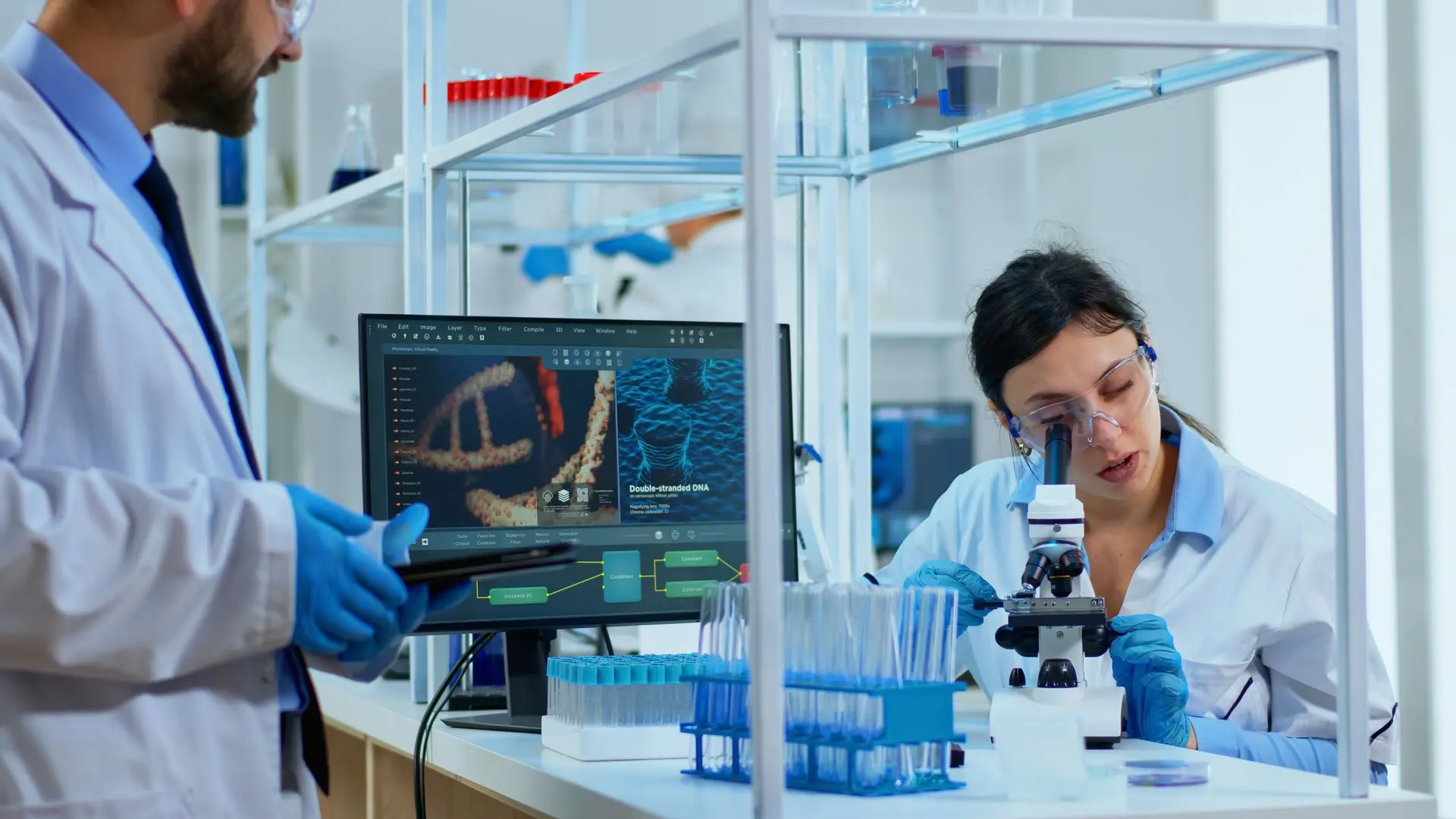
Knowing More About Nitrification
Nitrification is the biological formation of nitrate from sequentially oxidizing ammonium with the intermediate formation of nitrite. Those two oxidative reactions are catalyzed by ammonium oxidizers and nitrite oxidizers.
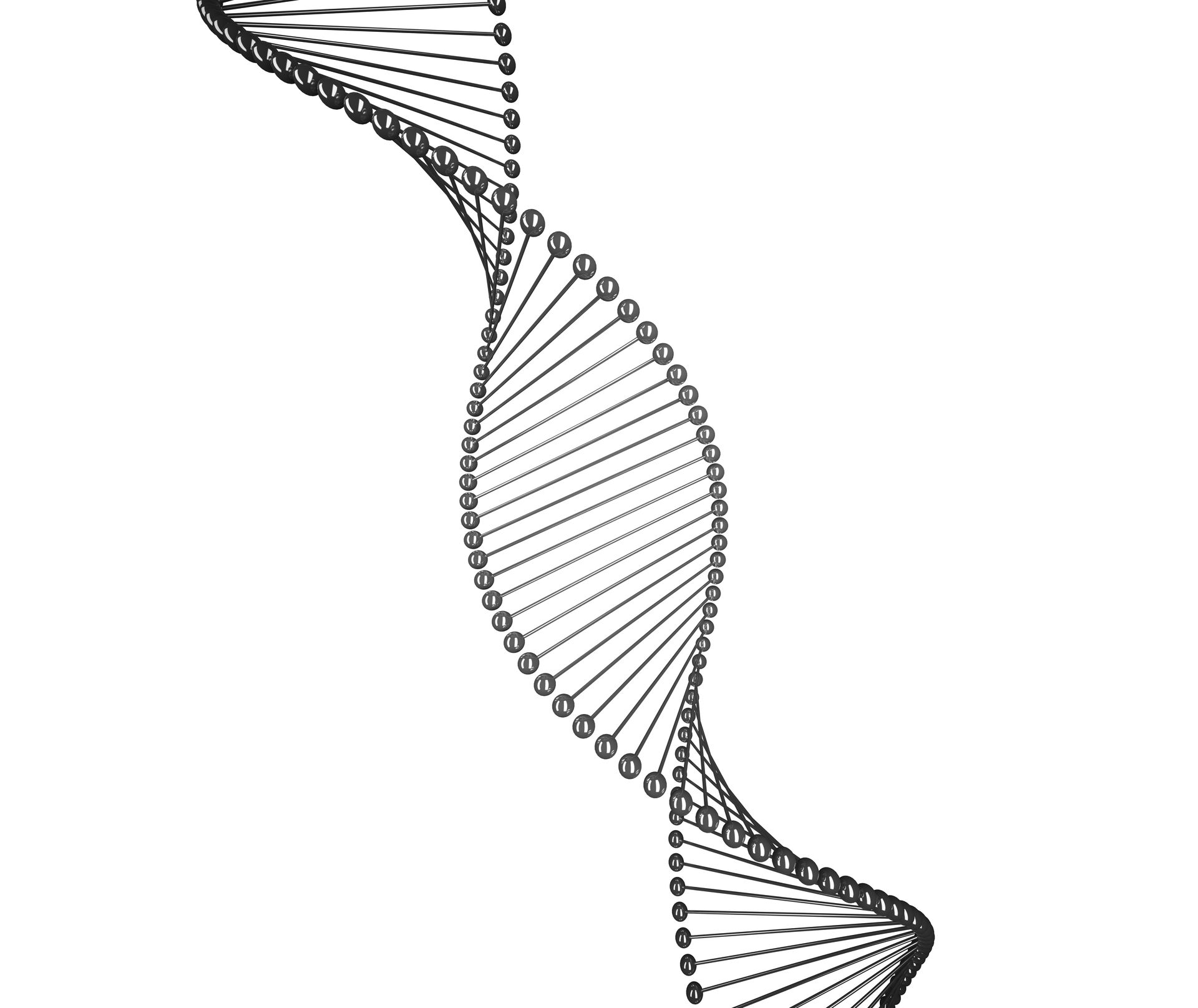
What is Isoelectric Point?
The isoelectric point (pI) is the pH at which any given protein has an equal number of positive and negative charges, in other word the protein has no charge or neutral. At a pH below the isoelectric point, proteins carry a net positive charge, and above the isoelectric point protein has a net negative charge*
RNA Polymerase: Synthesis RNA from DNA Template
RNA polymerase is an enzyme that catalyzes the synthesis of RNA from ribonucleoside triphosphates in the presence of a DNA template and divalent cation, such as Mg2+ or Mn2+. The RNA molecules are synthesized complementary and antiparalel to one of the DNA strands in a 5, to 3, direction. The ribonucleotides are covalently joined together by internucleoside 3, to 5, phosphodiester bonds with concomitant release of inorganic pyrophosphate. Continue reading ‘RNA Polymerase: Synthesis RNA from DNA Template’
Restriction Enzyme Storage
Restriction enzymes are endonucleases that recognize specific double stranded DNA sequences and cleaves the DNA in both strands. Restriction enzymes used in cloning are site specific. Cloning involves cleaving both the vector and genomic DNAs with a restriction endonuclease which yields compatible sticky ends, and then using those cohesive ends to recombine the DNAs into a construct or recombinant molecule. The vector is cleaved in one location, while the genomic DNA is extensively digested into a pool of fragments. The quality of restriction enzyme determines the successful of cloning process. Therefore, its storage is very important to be known by us. Continue reading ‘Restriction Enzyme Storage’
Knowing More About Nitrification
Nitrification is the biological formation of nitrate from sequentially oxidizing ammonium with the intermediate formation of nitrite. Those two oxidative reactions are catalyzed by ammonium oxidizers and nitrite oxidizers.
The stoichiometric equation for the oxidation of ammonium to nitrite by ammonium oxidizers is as follows : Continue reading ‘Knowing More About Nitrification’
What is Isoelectric Point?
The isoelectric point (pI) is the pH at which any given protein has an equal number of positive and negative charges, in other word the protein has no charge or neutral. At a pH below the isoelectric point, proteins carry a net positive charge, and above the isoelectric point protein has a net negative charge. Continue reading ‘What is Isoelectric Point?’
Separation of DNA Fragments Using PAGE Method
This method is able to separate DNA fragments with the size of as small as 10 bp and up to 1 kb with the resolution of as little as 1 bp. While agarose gel electrophoresis is only able to separate DNA fragments with the bigger size that PAGE does or in the size range of 100 nucleotides to around 10 – 15 kb. Continue reading ‘Separation of DNA Fragments Using PAGE Method’
Quantitation of Biosurfactant
Biosurfactants can be quantified by surface and interfacial tension. This is a generic quantitation and thus does not distinguish among different types of surfactants that may be present. Biosurfactants can be compared in terms of the amount they reduce surface or interfacial tension, and the critical micelle concentration (cmc), which is the lowest surfactant concentration above which no further decrease in surface tension or interfacial tension takes place. Continue reading ‘Quantitation of Biosurfactant’
Purification of Plasmid DNA
After the initial characterization, it is possible to purify further some or all of the plasmid DNAs by RNase digestion and extraction with organic solvents. This further purified DNA is suitable for techniques such as DNA sequencing, subcloning or the production of gene probes. In order to purify plasmid DNA after the isolation process, any residual RNA and contaminating protein are removed. This purification step involves two main steps, which are, first, removing residual RNA by using RNase in order to digest RNA and, second, extract contaminating protein using organic solvents, phenol-chloroform. Continue reading ‘Purification of Plasmid DNA’
Polyacrylamide Gel Electrophoresis (PAGE): Advantages and Disadvantages
Polyacrylamide Gel Electrophoresis (PAGE) is a powerful technique widely used in molecular biology for resolving small nucleic acid fragments that are difficult to separate using agarose gel electrophoresis. While agarose gels are effective for nucleic acid fragments in the range of 100 nucleotides to around 10-15 kb, they struggle with fragments smaller than this range due to diffusion within the gel matrix. PAGE overcomes these limitations, providing high-resolution separation for fragments as small as 10 base pairs and up to 1 kilobase with a resolution down to 1 base pair.
Advantages of Polyacrylamide Gel Electrophoresis (PAGE)
High Loading Capacity: PAGE has a high loading capacity, allowing up to 10 micrograms of DNA to be loaded into a single well (1 cm x 1 mm) without a significant loss of resolution.
Low Inhibitor Content: Polyacrylamide contains few inhibitors of enzymatic reactions, making it ideal for downstream applications that require clean samples.
Ideal for Fragment Isolation: PAGE is well-suited for isolating DNA fragments for subcloning and other molecular biology techniques, offering precise separation of even small fragments.
Disadvantages of Polyacrylamide Gel Electrophoresis (PAGE)
Base Composition Sensitivity: The mobility of fragments in PAGE can be affected by the base composition of the nucleic acid, which may complicate the accurate sizing of bands.
Reduced Fluorescence Visibility: Polyacrylamide quenches fluorescence, making it challenging to visualize bands containing less than 25 ng of DNA when using ethidium bromide staining.
Alternative Visualization Method for DNA Fragments
Instead of traditional ethidium bromide staining, an alternative method involves wrapping the gel in a UV-transparent plastic film, such as Saran Wrap, and placing it onto a thin-layer chromatography plate with a UV fluorescent indicator. By shining long-wave UV light through the gel onto the plate, regions with high DNA concentrations create a “shadow” where the transmitted UV is absorbed by the DNA. The position of the DNA bands can then be marked on the film with a marker and carefully cut from the gel for further analysis.
Polyacrylamide Gel Electrophoresis is a precise and effective tool in the toolkit of molecular biology, enabling researchers to achieve high-resolution separation of small nucleic acid fragments that are difficult to resolve with other methods.
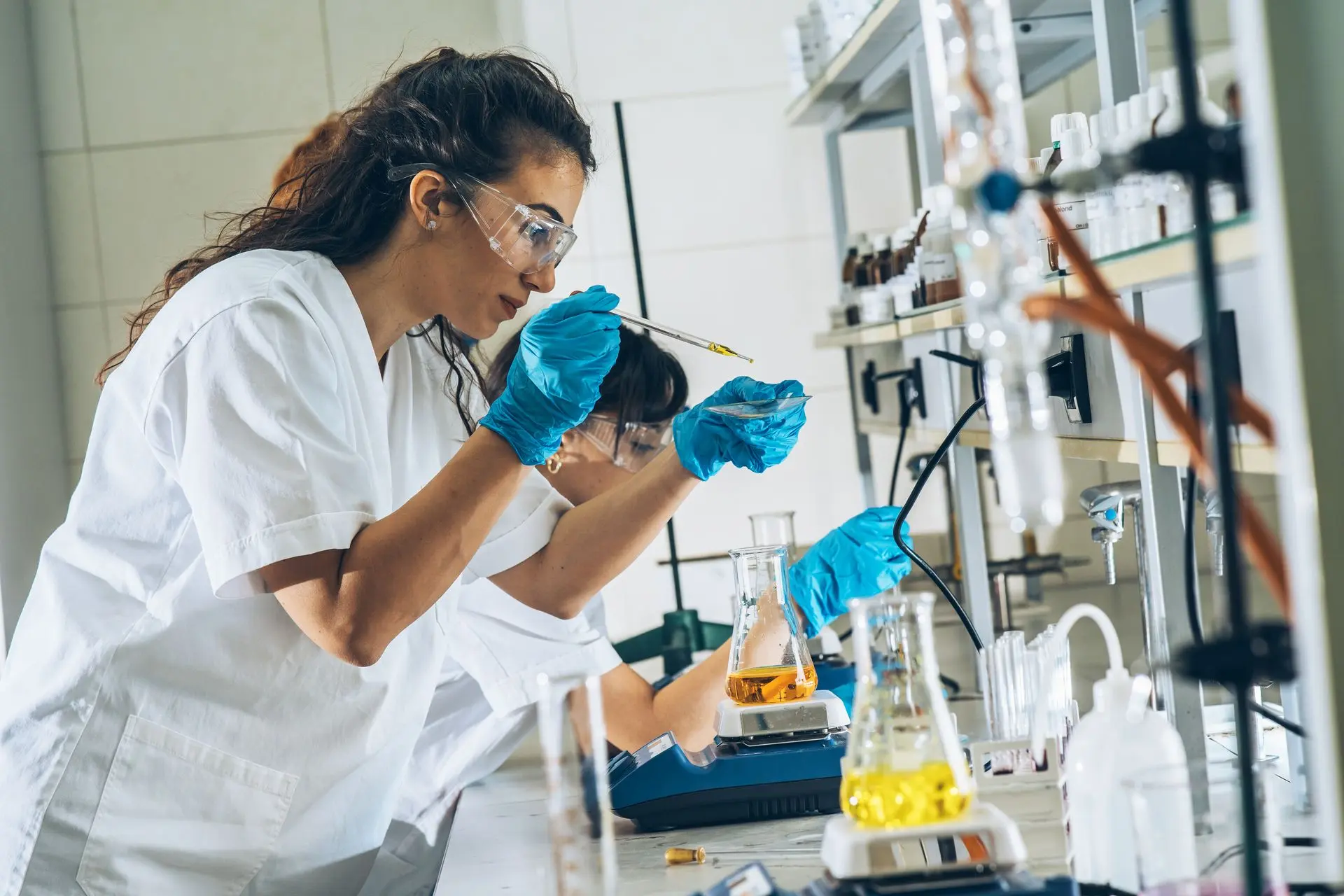
Employing HPLC for Analyzing DNA and PCR Products
Column liquid chromatography has been employed for the separation, purification, and detection of nucleic acids. Among chromatography methods provided, anion-exchange chromatography has been most commonly employed for the isolation and purification of not only oligonucleotides but also large double-stranded DNA.
In anion-exchange chromatography, DNA retention is dependent on electrostatic interactions between the negatively charged phosphate groups of DNA and cationic sites of the chromatographic matrix (see the picture below).
DNA can be eluted from the anion-exchange column by altering the ionic strength of the buffer solution. In the presence of a buffer of increasing ionic strength, DNA retention is generally a function of the number of negative charges associated with the phosphate groups.
One of the most common anion-exchange materials is diethylamino ethyl (DEAE)-bonded support, and it has been extensively used to modify original soft-gel supports, porous microparticular silica, and polymer-based materials. Availability of porous microparticular silica and polymer-based supports has led to enhanced column resolution and faster analysis times. However, the columns packed with porous particles have been used only with limited success in the analysis of large double-stranded DNA fragments.
HPLC columns based on nonporous, small-particle resins are available, it is very fast and also efficient in separating large double-stranded DNA. The success of these columns is based on the fact that nonporous, small particle size material with which they are packed provides improved efficiency and short analysis time. This is the result of a much faster DNA transfer between the solid and liquid column phases than is possible for conventional porous support. In addition, these columns offer high DNA recoveries because of the absence of pores.
HPLC of nucleic acids and PCR products has been successfully employed for post-PCR analyses.
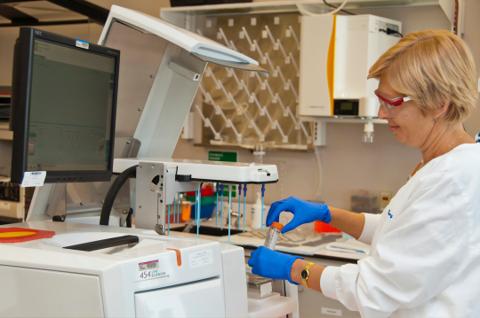
Rapid Boiling Method for Plasmid DNA Extraction
In the previous post, it had already explained about how to extract plasmid DNA by using alkaline lysis method. In this particular post, it will be explained the other method to extract plasmid DNA instead of using alkaline lysis method. It is Rapid Boiling method, an alternative to alkaline lysis method that was developed by Holmes and Quigley. Here, the cells are lysed partially allowing plasmids to escape, whereas the bacterial chromosomal DNA remains trapped in the cell debris. High temperature is then used to denature the chromosomal DNA, after which reannealing allows the plasmids to reassociate. Centrifugation removes the chromosomal DNA along with the cell debris, leaving the plasmid in suspension, from where it is recovered by isopropanol precipitation.
Materials:
LB broth bacteria culture medium. The content are 1% Tryptone, 0.5% yeast extract, 200 mM NaCl, then it sterilize by autoclaving in suitable aliquots.
STET mix which is contain 5% (v/v) Triton X-I 00, 50 mM Tris-HCl, pH 8.0, 50 mM EDTA, pH 8.0, 8% (w/v) sucrose. Store the mix solution at room temperature.
Lysozyme: Dry powder. Store at -20oC.
70% Ethanol.
Isopropanol.
TE solution: 10 mM Tris-HCl pH 8.0,1 mM EDTA.
A boiling water bath: An opened bottom tube rack is required because the tubes must be placed directly in the water to achieve rapid heating.
Sterile wooden toothpicks.
Methods:
Set up a culture for each miniprep by inoculating 2-3 mL of L-broth, containing an appropriate antibiotic (e.g., 100 micrograms/mL ampicillin) with a bacterial colony. Grow overnight at 37oC with vigorous shaking.
Where plasmids have a high copy number, the growth time may be reduced to approx 6 h.Before starting the miniprep, begin boiling the water and make up a fresh solution of 1 mg/mL lysozyme in STET mix.
Fill a 1.5-mL labeled microfuge tube with an aliquot from each culture. Pellet the bacteria by centrifugation for 1 min at 12,000 g. Carefully aspirate off the supernatant using a drawn-out Pasteur pipet.The short centrifugation time leaves a loose pellet that is easier to resuspend. If the pellet does not readily resuspend, pipet the solution up and down to dislodge it. Do not suck the pellet directly into the pipet tip.
Vortex each pellet for a few seconds to break up the pellet. Add 20 micrliters STET mix to each tube. The pellet should now easily resuspend by vortexing.
Immediately place the tubes in the open-bottom rack, and place in the boiling water for exactly 45 s. Ensure that each tube is at least half submerged.
Centrifuge the tubes at 12,000 g for 10 min. A large, sticky, loose pellet should form.
Remove the pellet from each tube by “fishing” it out with a sterile wooden toothpick. Because the pellet is quite slippery, it is useful to have a paper tissue at the top of the tube to catch the pellet and prevent it from slipping back down into the tube.
Add 200 microliters isopropanol to each tube, and centrifuge at 12,000 g for 5 min.
Aspirate the supernatant, and wash the pellet in 500 microliters 70% ethanol. Centrifuge the tube for 1 min to compact the pellet, and then aspirate the 70% ethanol.
Air dry the pellets for 10 min, and resuspend each one in 100 microliters TE buffer. Vortex and shake for 10 min before use to ensure complete dissolution.
Use 10 microliters (equivalent to 100 ng of plasmid for most vectors) and analyze by gel electrophoresis.
It is possible to scale up procedures for the isolation of plasmid.
Now, you have two options method in extracting plasmid DNA, which are alkaline lysis method and Rapid Boiling method.
Lowry Method: A Protein Assay
Although Lowry method is not good enough compared to Bradford and Bicinchoninic Acid method for protein quantitation, but it is still widely used due to its acceptability to estimate protein in almost all circumstances in which protein mixtures or crude extracts are involved. Lowry method is based on the conversion of Cu2+ to Cu+ under alkaline conditions. The reactions result in a strong blue color, which depends partly on the tyrosine and tryptophan content. Sensitivity of the method is down to about 0.01 mg of protein /mL, and is best used on solutions with concentrations in the range 0.01-1.0 mg/mL of protein. If your sample contains protein less than 0.01, then you can used Bradford method (it can be used for measuring between 1 and 10 micrograms of protein, for microassay) and Bicinchoninic Acid method (it can be used for measuring between 0.5 and 10 micrograms of protein/mL, for microassay).
Material
Complex-forming reagent: Prepare immediately before use by mixing the following stock solutions in the proportion 100:1:1 (by vol), respectively:
Solution A: 2% (w/v) Na2CO3 in distilled water.
Solution B: 1% (w/v) CuSO4•5H2O in distilled water.
Solution C: 2% (w/v) sodium potassium tartrate in distilled water.2 N NaOH.
Folin reagent (commercially available): Use at 1 N concentration.
Standards: Use a stock solution of standard protein (e.g., bovine serum albumin fraction V) containing 2 mg/mL protein in distilled water, stored frozen at –20°C. Prepare standards by diluting the stock solution with distilled water. You can make the solutions with several series concentration, for example 0; 10; 20; 50; 100; 200; 500; 1000; 2000 micrograms/mL.
The Method are:
To 0.1 mL of sample or standard, add 0.1 mL of 2 N NaOH. Hydrolyze at 100°C for 10 min in a heating block or boiling water bath.
Cool the hydrolysate to room temperature and add 1 mL of freshly mixed complex-forming reagent. Let the solution stand at room temperature for 10 min.
The reaction is very pH dependent, and it is therefore important to maintain the pH between 10 and 10.5. Therefore, take care when analyzing samples that are in strong buffer outside this range.
The incubation period is not critical and can vary from 10 min to several hours without
affecting the final absorbance.
Add 0.1 mL of Folin reagent, using a vortex mixer, and let the mixture stand at room temperature for 30–60 min (do not exceed 60 min).
The vortex-mixing step is critical for obtaining reproducible results. The Folin reagent is reactive only for a short time under these alkaline conditions, being unstable in alkali, and great care should therefore be taken to ensure thorough mixing.Read the absorbance at 750 nm if the protein concentration was below 500 micrograms/mL or at
550 nm if the protein concentration was between 100 and 2000 micrograms/mL.Plot a standard curve of absorbance as a function of initial protein concentration and use it to determine the unknown protein concentrations.
The assay is not linear at higher concentrations. Ensure that you are analyzing your sample on the linear portion of the calibration curve.
A set of standards is needed with each group of assays, preferably in duplicate. Duplicate or triplicate unknowns are recommended.
One disadvantage of the Lowry method is the fact that a range of substances interferes with this assay, including buffers, drugs, nucleic acids, and sugars. In many cases, the effects of these agents can be minimized by diluting them out, assuming that the protein concentration is sufficiently high to still be detected after dilution.
You can also increase Lowry method’s sensitivity by doing these two following things:
If the Folin reagent is added in two portions, vortex-mixing between each addition, a 20% increase in sensitivity is achieved.
The addition of dithiothreitol 3 min after the addition of the Folin reagent increases the sensitivity by 50%.
